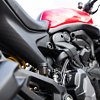Change can be difficult. Letting go of old favorites even more so.
When Ducati broke the news of the massive changes visiting the beloved Monster back in December, the Ducatista backlash was swift and severe. Modernized body styling? Preposterous. No more trellis frame? Unspeakable.
From building a V-four Superbike to dumping desmodromic valves in the latest Multistrada, Ducati has shown time and again they are willing to step away from tradition in the name of progress. The new 2021 Monster is the latest example of shedding preconceptions and delivering some tangible results in the name of evolution. This newest Monster boasts a 40-pound weight reduction from its previous model, an improved 937 cc motor putting out 111 ponies, and a portfolio of customizations to easily tailor the Monster to individual rider needs.
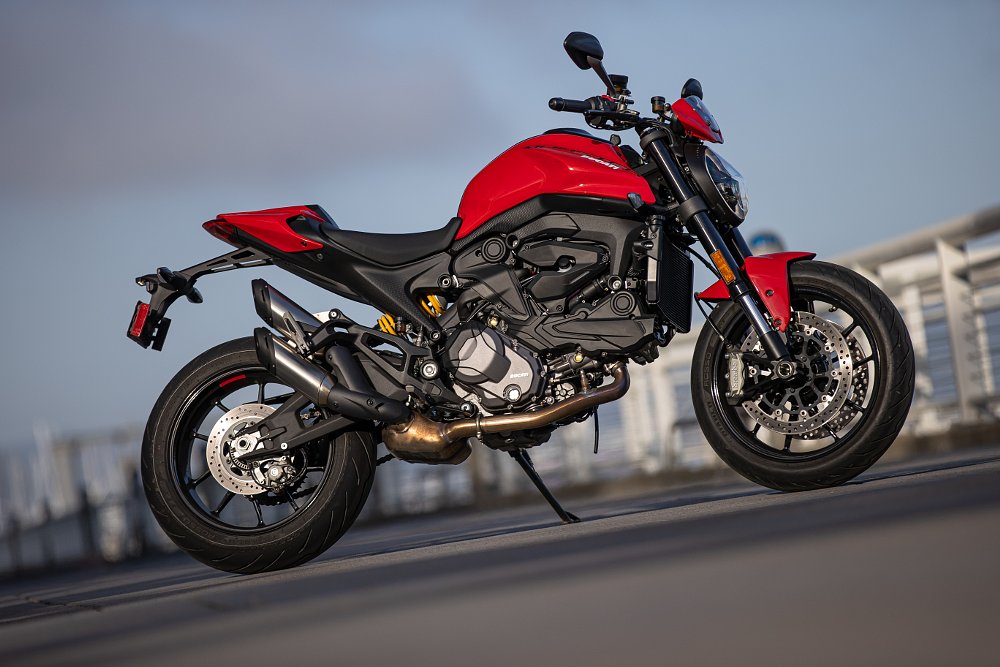
Pound for pound
There’s no two ways about it, the 2021 Monster is aesthetically a big departure from previous generations. Yes, the trellis frame is gone. It's replaced by a new cast aluminum frame that uses the engine as a stressed member. The lighter frame is one of several weight-saving measures across the motorcycle that make the 2021 Monster an astounding 40 pounds lighter than the previous generation. The headlight and body styling make it is easy to see this is a deliberate effort on Ducati’s part to evolve the classic Monster trimmings into a new era.
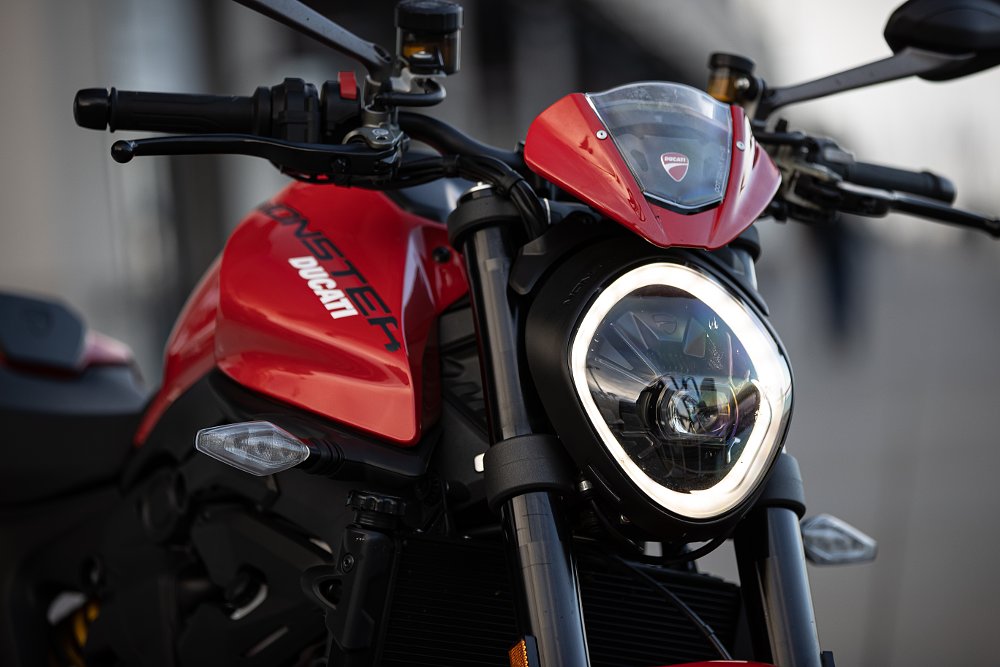
When it comes to rider ergonomics and comfort, Ducati has brought some thoughtful customization options to the Monster. The 2021 Monster can essentially come in three different seat heights: the stock 32.3 inches; an accessory seat at 31.5 inches; and finally you can combine the accessory seat with a lowering spring kit for a 30.5-inch seat height. I am a petite rider at five feet, four inches tall with a 31-inch inseam and on the lowest option I was nearly flat foot, compared to being on the balls of my feet with the standard seat height. I rode on both the 31.5-inch and the 30.5-inch seat heights throughout the day and did find a noticeable difference in the riding experience (more on this soon).
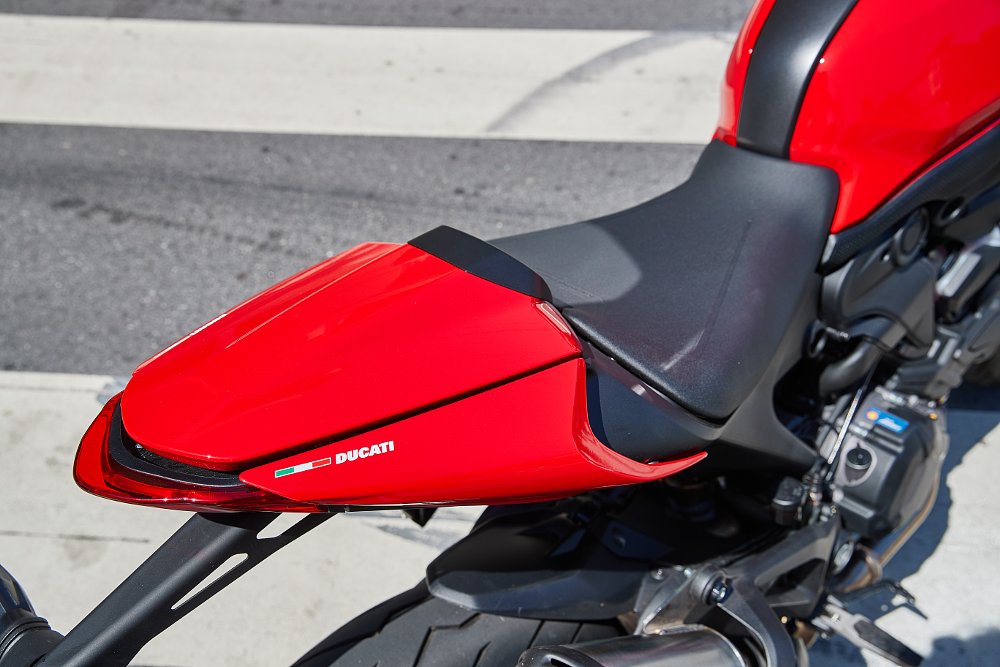
Another crucial element to rider comfort would be the hand controls and the Monster has adjustable levers for both the clutch and front brake. I was easily able to bring them in for my smaller hands and to have this level of adjustability straight off the showroom floor is something to be appreciated. It is worth mentioning that the new Monster also employs a revised hydraulic clutch to reduce resistance on its pull and I experienced no fatigue in my left hand after a long day of riding. These changes are a clear indicator that Ducati has a focus on making the Monster approachable for riders of all sizes and skill levels. When it comes to overall riding position, the Monster is certainly more sporty than other naked bikes on the market, such as the Triumph Trident or Yamaha MT-07. I personally like the rearset footpeg position and more aggressive crouch but I did notice the taller riders of our group did a lot of stretching at stops and said that the cockpit was a bit cramped for their liking.
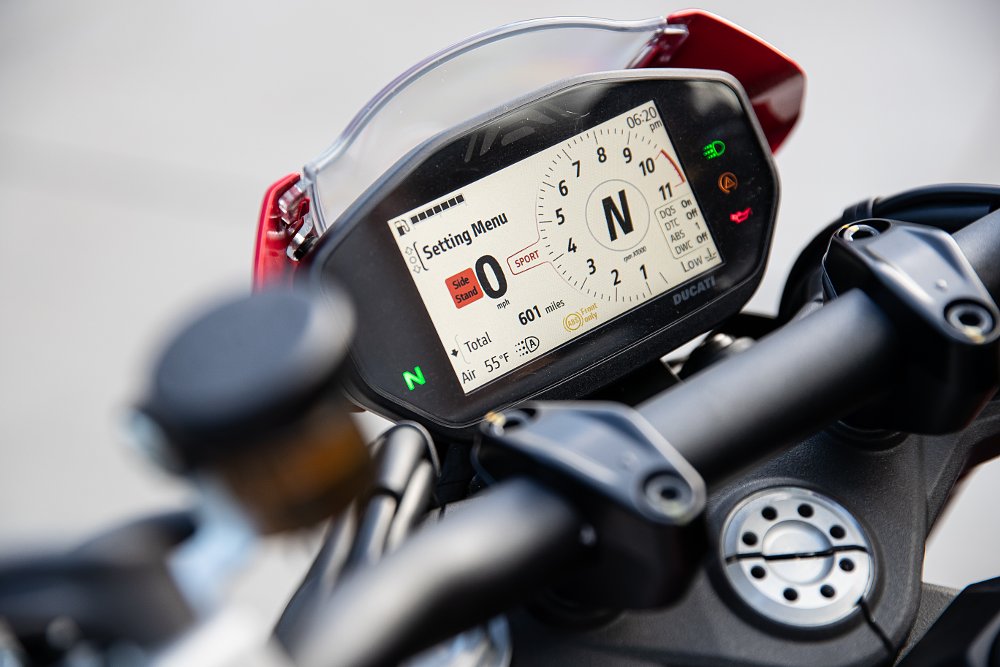
The Ducati Monster comes with a robust electronics suite that they claim is “best-in-class” and it is a title hard to argue with. The Monster comes fully loaded with cornering ABS, traction control, wheelie control, launch control, quickshifter, and three ride modes (Urban, Touring and Sport mode) that are also customizable. I personally find this amount of technology excessive in the Monster, but others may disagree. These features, along with the usual riding data, are displayed on the 4.3-inch TFT dash, which would be easy to read if it wasn’t overloaded with too much information all at once on the screen. I had some issues toggling through the endless menus trying to learn how to clear the trip meter, but swapping ride modes was pretty straightforward with just a few presses of the button.
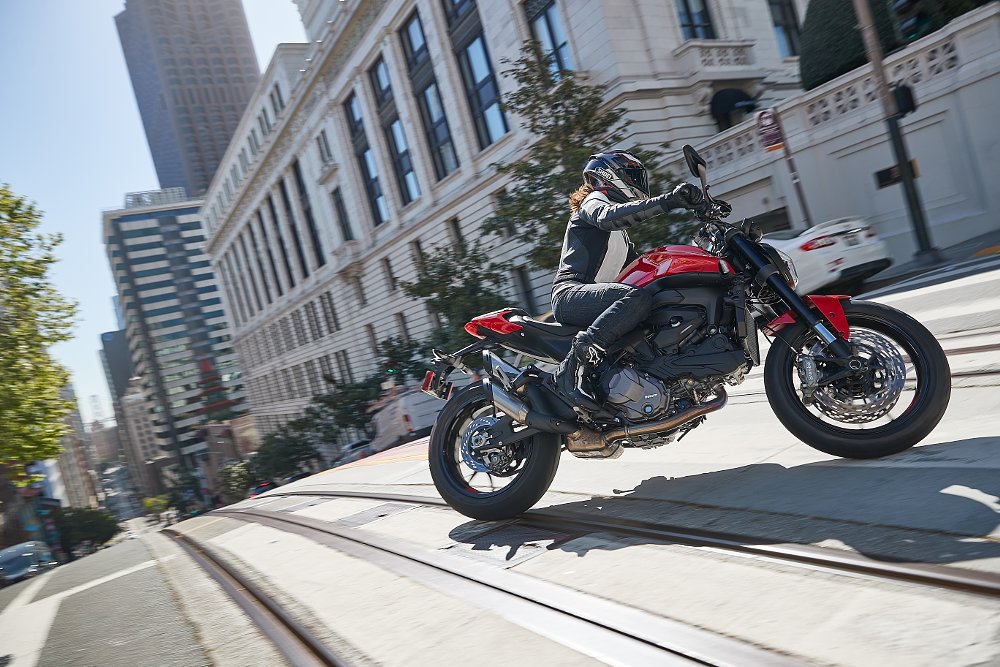
Hitting the city streets
My day onboard the new Monster started in the hustle and bustle of downtown San Francisco and this dense urban environment offered a variety of riding situations to test the Monster’s agility. Quick stop and go, tight U-turns, potholes, tram tracks, you name it and there was always something the city streets would throw our way. I opted to try out the Monster’s lowest possible seat height option: the lowering spring plus the lowered accessory seat for an overall height of 30.5 inches. The Monster’s 40 pounds of shaved weight combined with a seven-degree increase in steering sweep makes this bike surprisingly easy to maneuver.
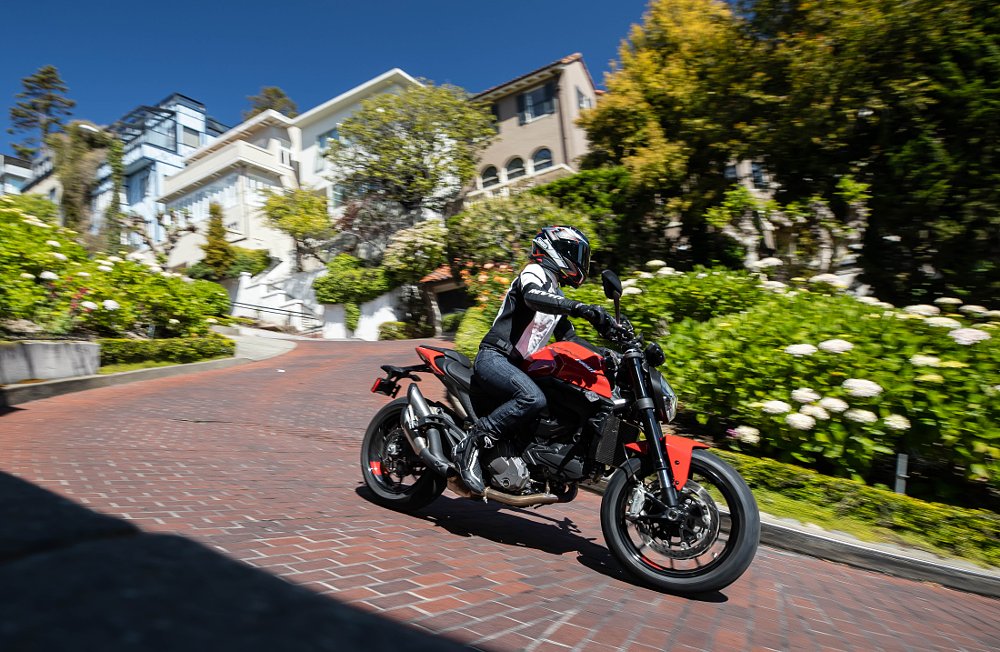
In the cityscape, I was happy to be on the lowered Monster as our stops were frequent and sometimes abrupt. The Monster soaked up the city potholes and uneven pavement with little fussing, and I found that the lowering spring kit helped soften it up for my relatively low rider weight as well. I tried out both the Urban mode and Touring mode and actually preferred the Touring mode best on the city streets. Urban mode detunes the power to 75 percent, whereas the Touring mode keeps the power full on but with parameters to allow for a smoother delivery of that power.
The Monster is more than adequate for the demands of the city streets but I did find in this setting it ran hot, very hot. The bike never got to the point of turning itself off but I watched the internal temps reach 214 degrees F and the heat on my legs in riding jeans was starting to become unbearable. This issue manifested itself much earlier than I thought it would, and considering we were riding in cooler than normal temperatures of San Francisco I think this could be of real concern for riders in hot climates.
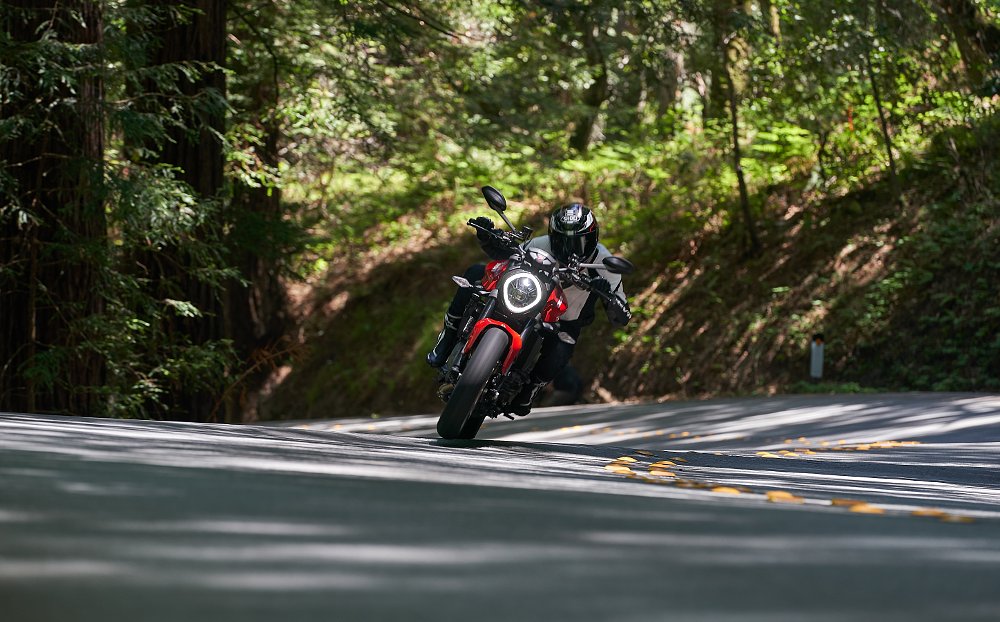
Dancing in the Redwoods
On our way out of the city we rode a stretch of highway where we could finally let the Monster stretch its legs a bit. As is standard for most naked bikes, the lack of wind protection can be fatiguing. At some “higher than normal” freeway speeds I did experience a slight speed wobble, but the Monster recovered from it when I breathed the throttle for a quick second. When the freeway dissolved into the long and fast flowing single lane of the coastal byways, the Monster was a very agreeable companion. Though the motor does produce a noticeable vibration I never felt any numbness in the footpegs, seat, or grips.
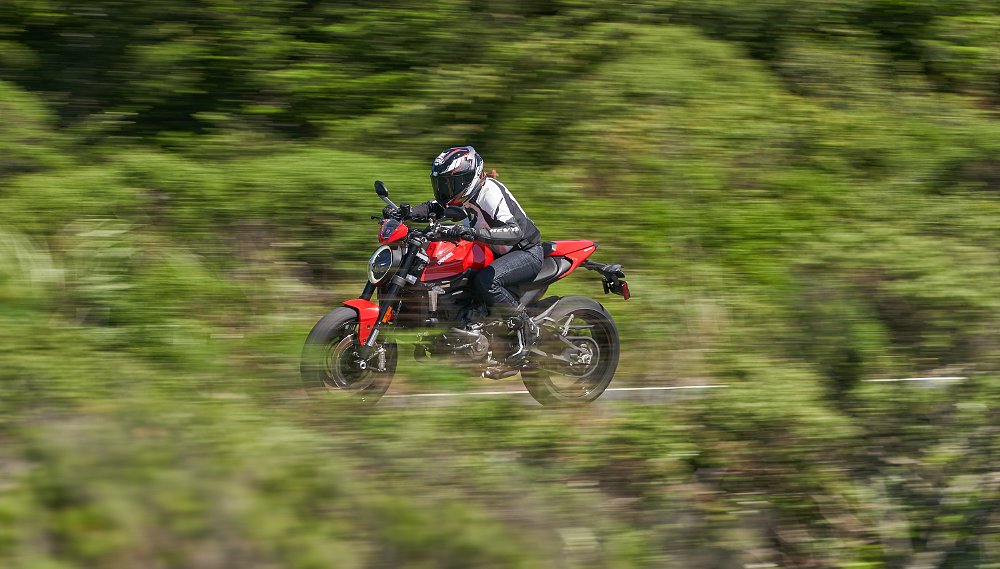
I was fortunate enough to have the fully lowered Monster for the first half of my day, which included some of the tight canyon riding, and after lunch hopped on board the standard bike with only the low accessory seat so I could evaluate the stock suspension in the twisties, as well. There was a discernible difference between the two, with the lower spring kit providing a plusher experience in some of the harsh bumps that the redwood tree roots have laced under the pavement of the Norcal canyon roads we were on. The stock suspension setting was quite stiff and did not fare as favorably over the bumpy roots, but when the road was clear it felt planted in the corner and did not have any strange behaviors and rebounds. Likewise, with the Brembo brakes and Pirelli Diablo Rosso III tires, all of these high end components in concert produced beautiful results in the canyons.
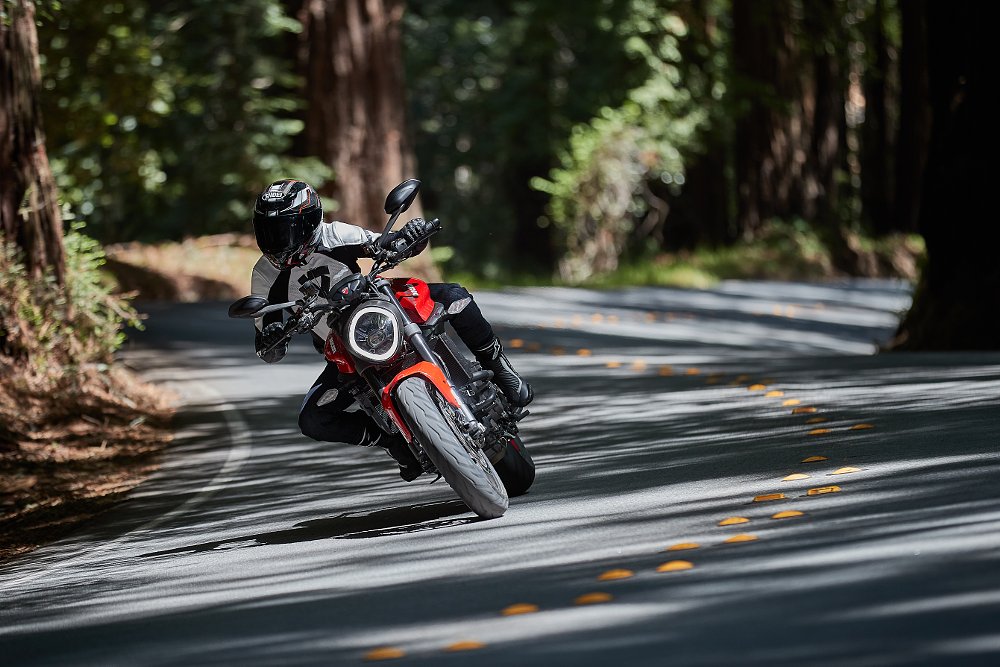
One of my favorite features on these backroads was the Monster’s quickshifter, which allowed me to rapidly shift and adapt to the undulating curves of the redwood forest. I put the Monster into sport mode for this spirited riding session and the 90-degree V-twin motor really came to life, punching out of the corners but also displaying some forgiveness as I played with second or third gear in the essess. The versatility of the powerband on the Monster did impress me. Any pull on the throttle between 4,000 and 7,000 rpm brought a burst of linear power to my beck and call. Although the motor has grown to 937 cc and 111 horsepower, the bike was still very user-friendly. Talking with some Ducati representatives, I confirmed the Monster motor has special tuning and even a different airbox that produces a unique sound to the Monster’s Testastretta engine as well. Simply put, the Ducati Monster was fast, nimble, and responsive when dancing through the redwoods.
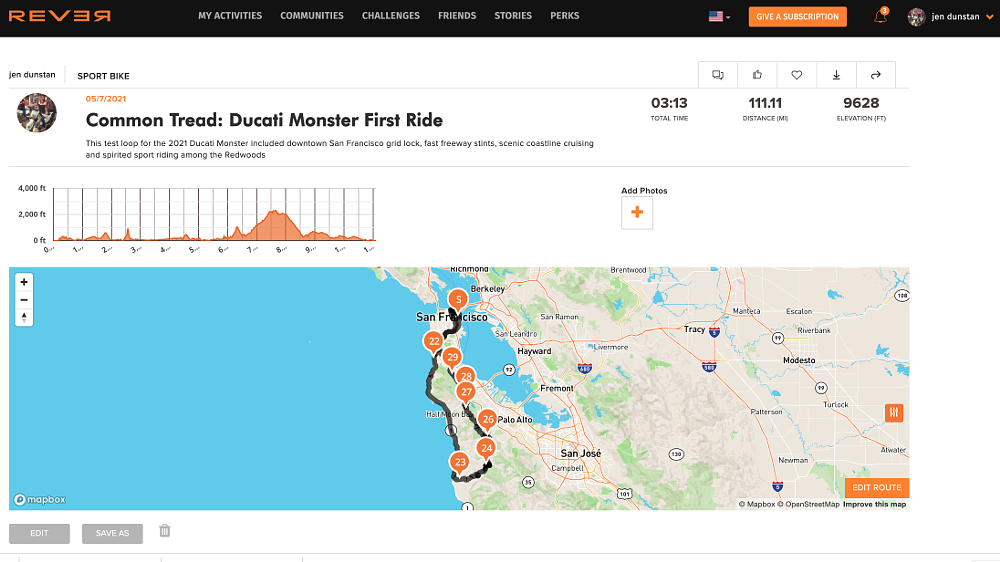
A new era
The naked bike segment isn’t what it used to be, and for the Ducati Monster to remain relevant a seismic shift like this was bound to happen. Ducati has shown us multiple times now that they are prepared to do what is necessary to stay at the forefront, first with the V-four on the Panigale and now with the disappearing trellis frame on the Monster. As an outsider to the Ducatista ranks, for me the Monster was always the entry point into the Ducati brand, a naked bike with a sporty spirit and modest price tag (for a Ducati). It wasn’t simply a trellis frame, or a traditional headlight, or any other over-sanctified physical component.
It is that spirit that is alive and well in the 2021 Monster. This Monster delivers a powerful yet usable motor accompanied with a well sorted chassis, suspension, and rider aids fitting for the new era of motorcycling. The added benefits of customizable seat heights, rider controls, and electronics all signal to Ducati’s desire to welcome a diversity of riders to its brand. Love it or hate it, the new Monster is focused on the new era.
|
2021 Ducati Monster
|
|
|---|---|
|
Price (MSRP)
|
$11,895 base, $12,195 Monster +
|
|
Engine
|
937 cc, liquid-cooled, four-valve, L-twin
|
|
Transmission,
final drive
|
Six-speed, chain
|
|
Claimed horsepower
|
111 @ 9,250 rpm
|
|
Claimed torque
|
69 foot-pounds @ 6,500 rpm
|
|
Frame
|
Aluminum front frame, GFRP subframe
|
|
Front suspension
|
43 mm USD fork; 5.1 inches of travel
|
|
Rear suspension
|
Monoshock, adjustable for preload; 5.5 inches of travel
|
|
Front brake
|
Dual Brembo M4.32 monobloc four-piston calipers, 320 mm discs, ABS
|
|
Rear brake
|
Brembo two-piston caliper, 245 mm disc, ABS
|
|
Rake, trail
|
24 degrees, 3.7 inches
|
|
Wheelbase
|
58.0 inches
|
|
Seat height
|
Adjustable from 32.3 inches to 30.5 inches
|
|
Fuel capacity
|
3.7 gallons
|
|
Tires
|
Pirelli Diablo Rosso III, 120/70R17 front, 180/55R17 rear
|
|
Claimed weight
|
416 pounds (wet)
|
|
Available
|
Now
|
|
Warranty
|
24 months
|
|
More info
|
|










